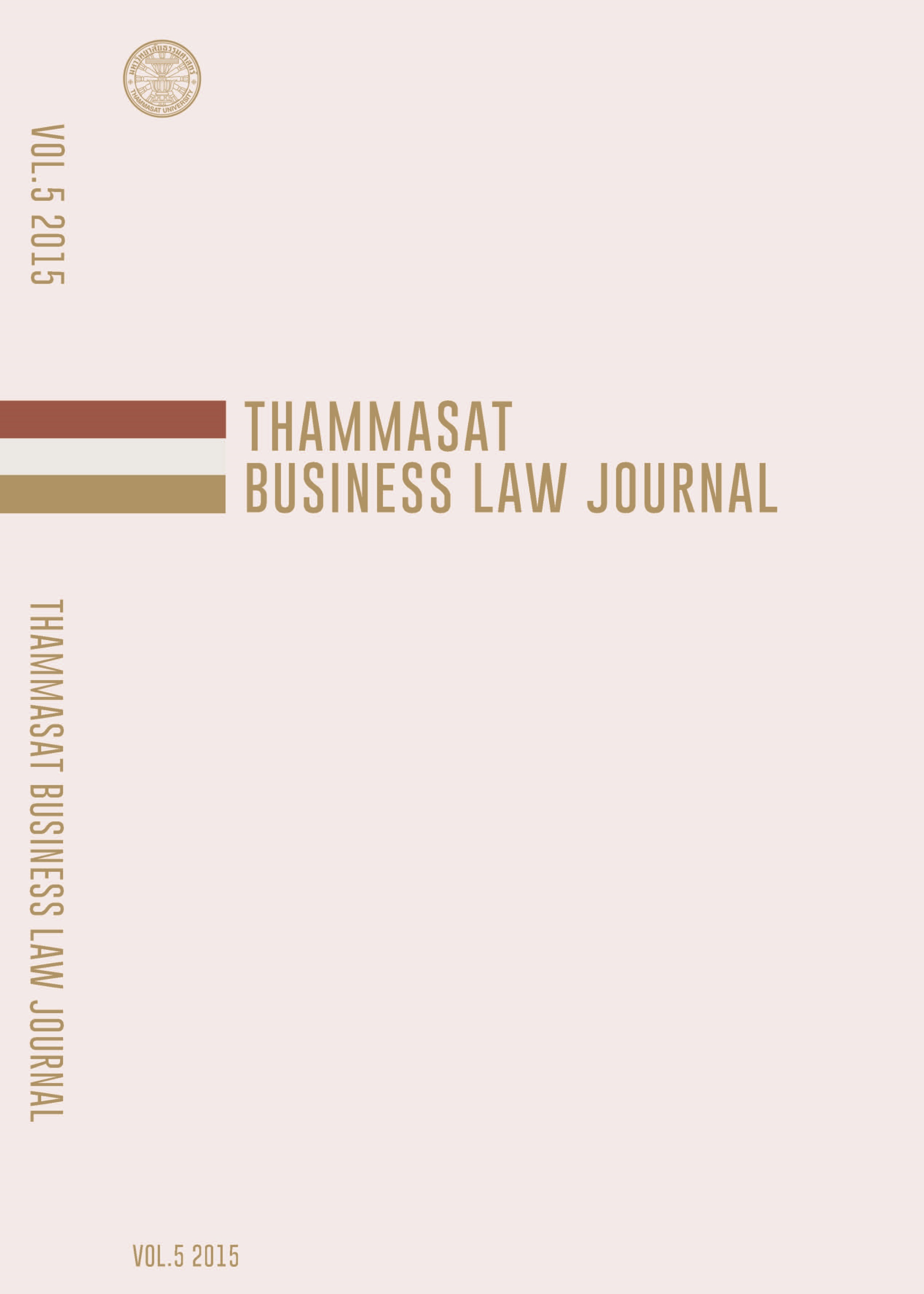THE AMBIGUITY OF THE TERM “TRADE SECRET” UNDER TRADE SECRET ACT B.E.2545
Main Article Content
Abstract
Considering the claims for damages from the acquisition of trade secrets by unlawful acts, the data or idea has been classified as a trade secret will be considered first and what the defendant does will be the second. The law provides protection and prohibition on the disclosure of confidential information of the industry. Although such confidential information is not patentable, however the protection of trade secrets is still giving protection to the owner.
The majority of legal opinions classify the intellectual property as one criteria of property. It is the primary basis for determining remedies. For example, to consider a trade secret in the case of employment: the trade secrets of business and other information are considered as the property of the employer, the employee cannot use such information in conflict of interest with employers. It is important to protect the trade secret by not disclosing it without consent from its owner. When it comes to the court that whether the non-technical information is concerned as trade secret or not, such issue may cause the problem to the owner of the trade secret because the term trade secret under section 3 of the Trade Secret Act B.E. 2545 does not state the various kinds of trade secret as those in the US law, the Restatement (Third) of Unfair Competition 1995 and the Uniform Trade Secret Act 1985.
This study will conduct a comparative study on the definition of the term “trade secret” in order to protect the owner of the trade secret through the documentary research method, using texts and documents as source materials; for example, international and domestic related laws, journals, periodicals, articles, information through the internet and other relevant documents. The obtained information will be applied and analyzed in order to obtain appropriate and practicable solutions to the problem. The United States laws will be analyzed: the Restatement (third) of Unfair Competition 1995 and the Uniform Trade Secret Act 1985. The thesis is to propose the protection of trade secrets that can truly happen in practice and to propose ways to determine the details, including the scope of the law.
Article Details
References
Catherine Colston, Principle of Intellectual Property Law. Cavendish Publishing Limited, 1999
Catherine Colston and Kirsty Middleton, Modern Intellectual Property Law. Cavendish Publishing Limited, 2005
Deborah E.Bouchoux, Protecting Your Company’s Intellectual Property. Amacom, 2001
Howard C.Anawalt and Elizabeth Enayati Powers, IP Strategy Complete IntellectualProperty Planning Access and Protection 2000 Edition. West Group, 2000
Howard B.Rockman, Intellectual Property Law for Engineers and Scientists. Wiley Interscience, 2004
John Hodgson and John Lewithwaite, Law of Torts, Third Edition. Blackstone Press, 2001
Law and Information Service Secretariat of the Senate, “Draft of the Trade Secrets Act. B.E…”,2000
Lionel Bently Brad Sherman, Intellectual Property Law. Oxford University Press, 2001
Peter Groves, Intellectual Property with Competition Law and Practice. Cavendish Publishing Limited, 1994
Surapon Triwate. Trade Secret Act B.E 2545. Winyuchon, Bangkok, 2546
Playut Thatanarm “ The revert engineering Case study in Well known of product principle” Master of Law, Assumption University, 2011.
Wichaya Nakreesatit “ Problems on Double importation of invenetion studying in The Revert Engineering” Master of Law, Assumption University,2011.
Terrence F. Mac Laren, Worldwide Trade Secrets Law, Volume 2, P. B3-5 (2001).
Alfredo Ilardi and Michael Blakeney, international Encyclopedia of Intellectual Property Treaties, 2004
American Bar Association Baltimore, Maryland, “Uniform Trade Secret Act with 1985 Amendments Drafted by the National Conference of Commissioners on the Uniform State Laws”,
on July2nd, 2015)
Christopher cole, “the Exclusive Trade Secret known as a Customer list”,
E.I. duPONT deNEMOURS & COMPANY, Inc., Plaintiff-Appellee, v. Rolfe CHRISTOPHER et al., Defendants-Appellants No. 28254,
The European Commission, “Guide on trade secrets. Protecting your trade secrets in Southeast Asia”,
Jeffrey K. Riffer and Joanna H. Kim ,“Pitfalls to the Defense of Reverse Engineering”,
C. Schwab, “Keeping Confidence Trade Secrets in Business Strategy and Starting Your Business”,


